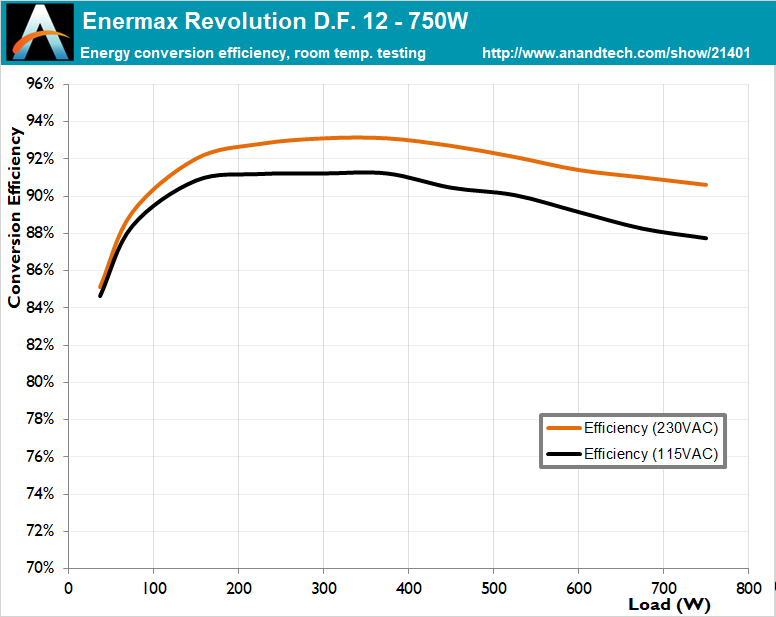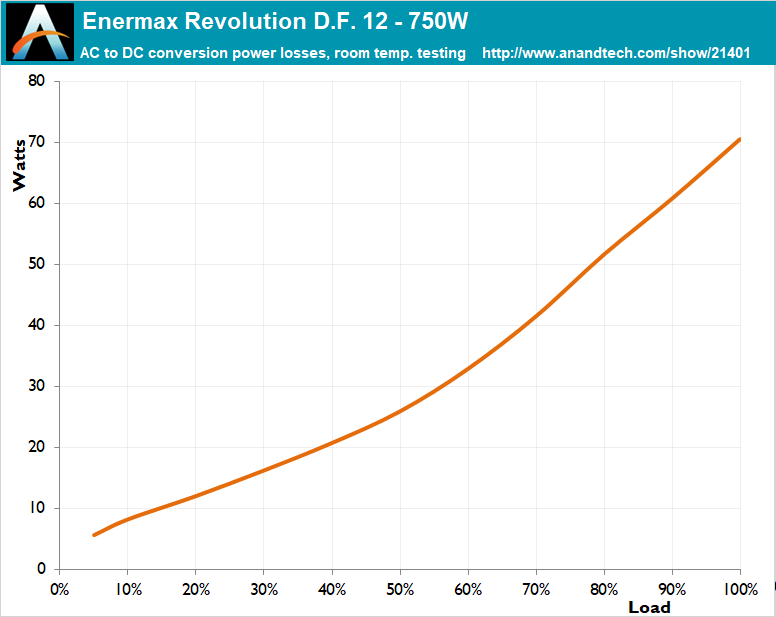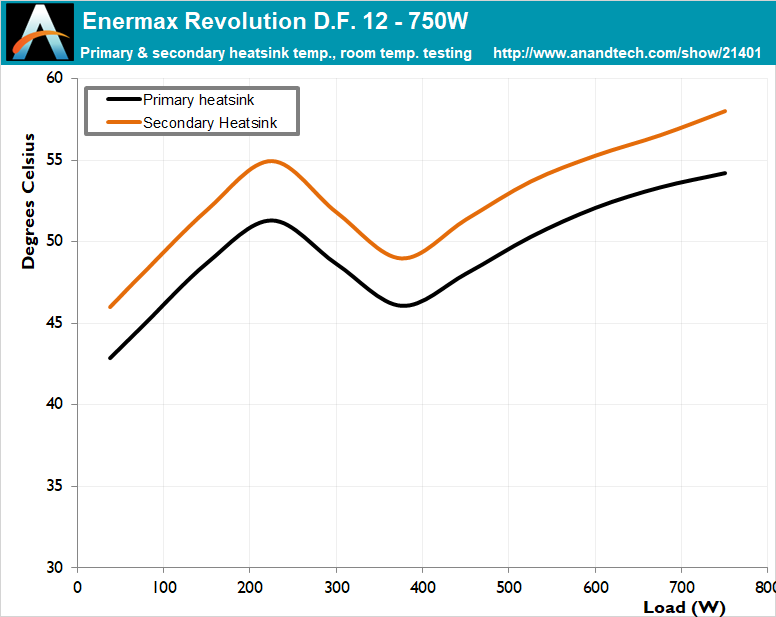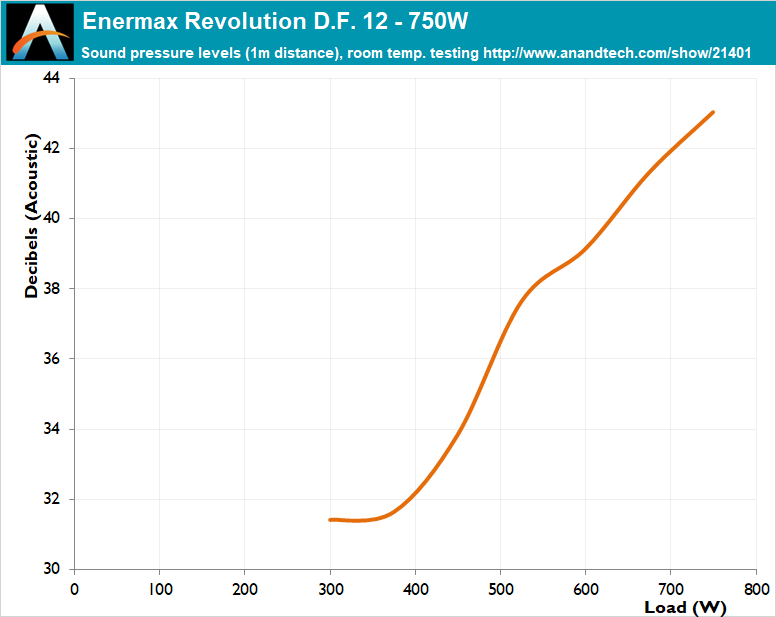The Enermax Revolution D.F. 12 750W ATX 3.1 PSU Review: Compact Contender
by E. Fylladitakis on June 7, 2024 8:00 AM EST- Posted in
- Cases/Cooling/PSUs
- PSUs
- 80Plus Gold
- Enermax
- 12VHPWR
- 12V-2x6
- ATX v3.1
Cold Test Results (~25°C Ambient Temperature)
For the testing of PSUs, we are using high precision electronic loads with a maximum power draw of 2700 Watts, a Rigol DS5042M 40 MHz oscilloscope, an Extech 380803 power analyzer, two high precision UNI-T UT-325 digital thermometers, an Extech HD600 SPL meter, a self-designed hotbox and various other bits and parts. For a thorough explanation of our testing methodology and more details on our equipment, please refer to our How We Test PSUs - 2014 Pipeline post.
The Enermax Revolution D.F. 12 750W PSU exceeds the standards of the 80Plus Gold certification comfortably when the input voltage is 115 VAC, even though the input voltage has a significantly higher impact on efficiency than usual. When tested with a 115 VAC input, this PSU achieves an average nominal load efficiency of 90.0% across its operational range from 20% to 100% of its capacity, which rises to 92.1% when operated with a 230 VAC input. The efficiency of the unit peaks at a load near the midpoint of its capacity. Notably, the efficiency under very low load conditions is great, setting it apart from many competitors within the same power output range.
The Enermax Revolution D.F. 12 750W PSU features a hybrid fan mode, allowing the fan to remain off under low-load conditions to maintain silence. The fan starts operating only when it is thermally necessary, which in our case was when the load exceeded approximately 300 Watts – a little sooner than what the unit’s official specifications imply, yet the “Zero-RPM up to 50% load” marketing statement could be possible in ideal laboratory conditions. At ambient room temperatures, this means the PSU can operate quietly for most low to moderate usage scenarios. As the load increases beyond 300 Watts, the fan gradually ramps up its speed to effectively manage the increasing thermal output. This strategic approach optimizes both acoustic comfort and cooling performance, maintaining a balance that keeps the PSU virtually inaudible while the load remains low.















1 Comments
View All Comments
Threska - Saturday, June 8, 2024 - link
"The Active Power Factor Correction (APFC) setup comprises a standard rectifying bridge attached to the main APFC heatsink, supplemented by an additional heatsink, two APFC MOSFETs (WML28N60C4), a diode, and a large inductor paired with two Rubycon 270 μF capacitors."Interesting how important PFC is.
https://youtu.be/ZwkNTwWJP5k